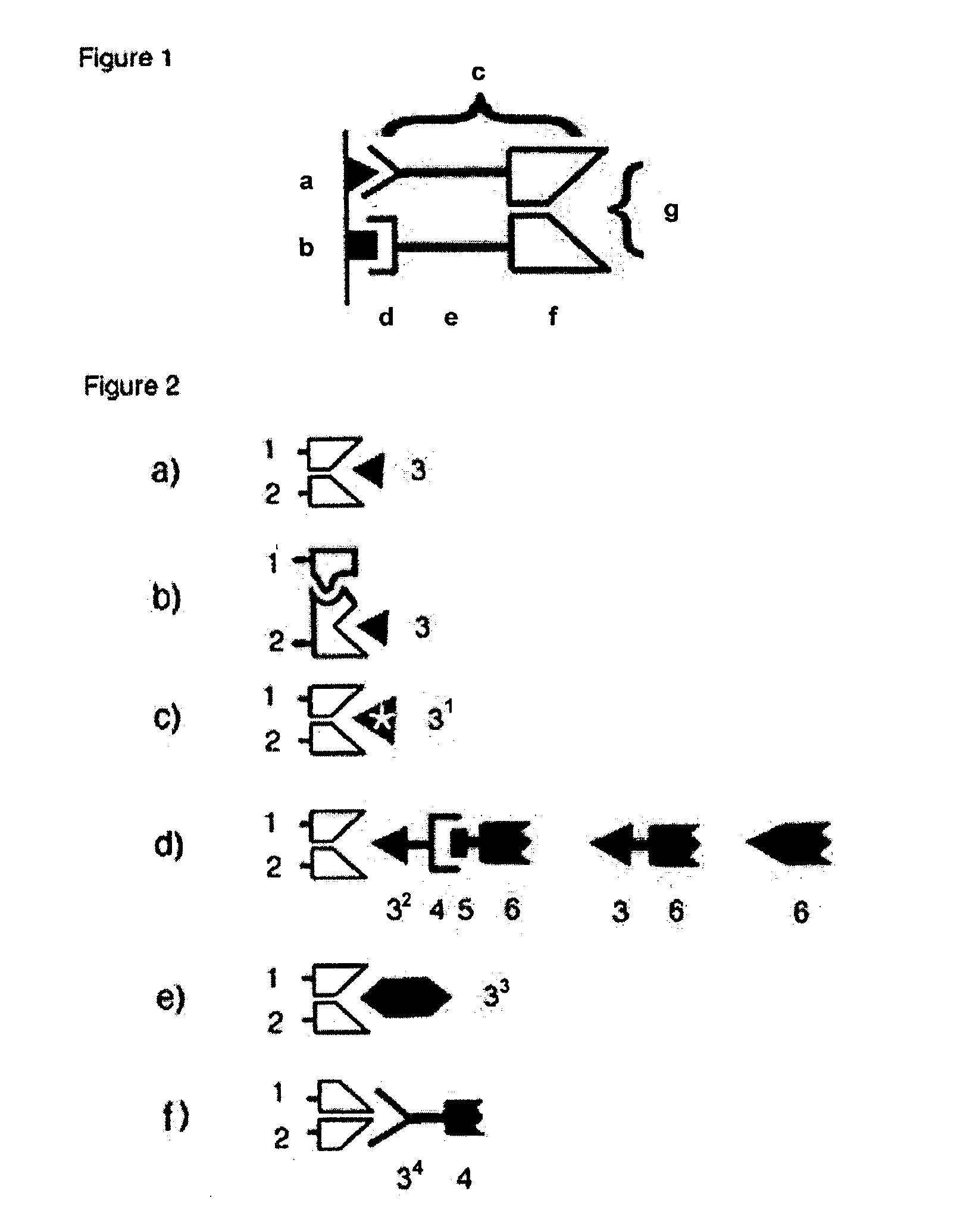Binary or polynary targeting and uses thereof
a polynary and effector technology, applied in the field ofbinary or polynary targeting, can solve the problems of lack of bystander effect, insufficient selectivity, toxic effector coupled to the antibody is expected to have deleterious effects on the rest of the system,
- Summary
- Abstract
- Description
- Claims
- Application Information
AI Technical Summary
Problems solved by technology
Method used
Image
Examples
example 1
Imaging of Tumor Cells
Tumor cells expressing the EGF receptor are imaged following construction of proteins with two subunits, each consisting of two domains analogous to the constant and variable domains that make up an antibody Fab fragment (represented as CH-VH::CL-VL). The VH::VL portion that binds antigen is normally called a paratope, and the separated VH and VL portions will be referred to here as demitopes. Copending application, Ser. No. 10 / 071,844 filed Feb. 8, 2002, incorporated herein by reference, describes replacing the constant domains (CH::CL) with any proteins (X and Y) that bind to each other. The paratope (VH::VL) thereby formed by the attached variable regions provides a means of detecting the X::Y interaction. In the present example, the X and Y portions are comprised of proteins, such as single chain Fv antibodies, that bind non-overlapping epitopes on the EGF receptor. The resulting signal generated as a result of the assembly of a functional paratope provides...
example 2
Drug Delivery
Similar constructs are used to deliver a therapeutic effector to the targeted tumor cells. Specifically, the assembled paratope is chosen for its ability to bind to biotin. A biotin conjugated radioligand or a biotin conjugated prodrug activating enzyme then provides the therapeutic effector. The prior art has described the pharmacokinetic advantages of introducing small molecule final effectors after the targeting proteins have maximally localized. Binary targeting preserves those advantages while enabling higher specificity in the protein targeting aspect of the technique.
example 3
Facilitating Virus Entry
The paratope created by the targeting components constitutes a receptor for an insect virus that is non-infectious to normal human cells. The reconstituted receptor enables a very low background for gene therapy vector insertion into human cells. Feasibility of introducing novel viral receptors into cells is established by the prior art, in which a single chain antibody against hoof and mouth virus was isolated; when fused to a cell surface protein, the antibody functioned as a novel receptor for the virus, allowing high infectivity for cells that previously were not susceptible to the virus (Rieder et al., Proc. Natl. Acad. Sci. U.S.A. (1996) 93:10428-33).
PUM
| Property | Measurement | Unit |
|---|---|---|
| cellular structure | aaaaa | aaaaa |
| subcellular structure | aaaaa | aaaaa |
| fluorescent | aaaaa | aaaaa |
Abstract
Description
Claims
Application Information
 Login to View More
Login to View More - R&D
- Intellectual Property
- Life Sciences
- Materials
- Tech Scout
- Unparalleled Data Quality
- Higher Quality Content
- 60% Fewer Hallucinations
Browse by: Latest US Patents, China's latest patents, Technical Efficacy Thesaurus, Application Domain, Technology Topic, Popular Technical Reports.
© 2025 PatSnap. All rights reserved.Legal|Privacy policy|Modern Slavery Act Transparency Statement|Sitemap|About US| Contact US: help@patsnap.com


